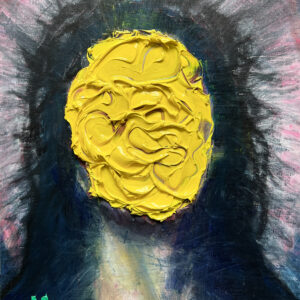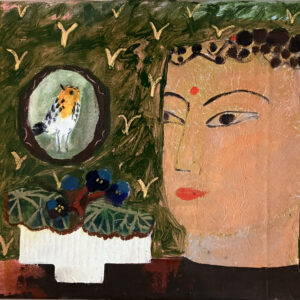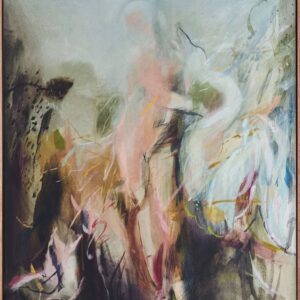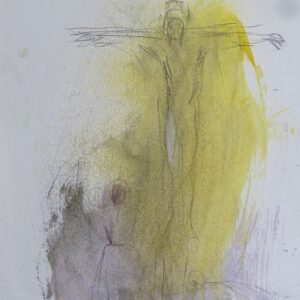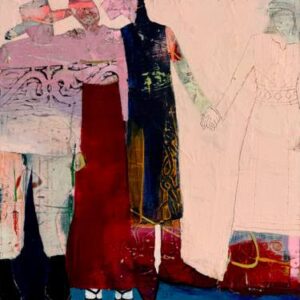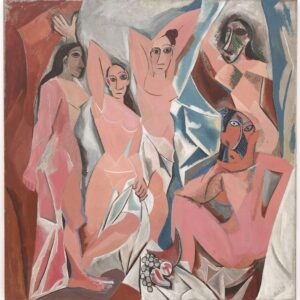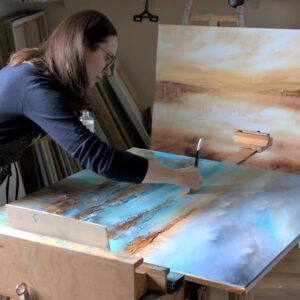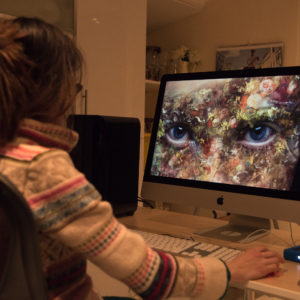Art History 101
Religious Iconography in Art: Jesus, Mary, and Eastern Symbolism
Religious themes have shaped art since the days of Byzantine mosaics and Romanesque frescoes. Contemporary art continues to draw on faith to explore identity, ritual, and transcendence. Discover the symbols that have shaped art history, from the Buddha to Jesus and the cross.
Jesus and the Madonna in Art
Featured Image: Shroud. Jesus Christ by Icon Art
Few figures have appeared as often as Jesus Christ and the Virgin Mary throughout the history of Western art. Life of Christ scenes from Nativity to Resurrection and pietàs—the Virgin Mary holding the body of Jesus, often after the crucifixion—are some of the most enduring representations in the canon.
Giotto’s Lamentation captures the sorrow of Jesus’s death with striking emotion, while Leonardo da Vinci’s The Last Supper changed religious narrative through composition. Meanwhile, Raphael’s Sistine Madonna presents Mary as divine and maternal, a figure suspended between heaven and earth. These works not only reflect theological ideas, but they also helped shape them visually for generations.
Modern interpretations often focus less on doctrine and more on pure symbolism. Jesus might appear as a political figure, a source of healing, or a representation of endurance. Symbols like the cross may appear in the place of Jesus, distilling centuries of narrative into a single, potent form.
Sacred Symbols Across Cultures and Faiths
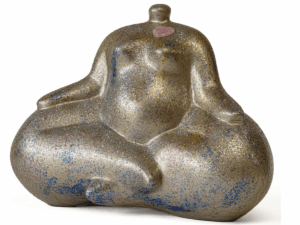
Featured Image: The Silver Buddha sculpture above represents Dhyana Mudra, a pose that represents the deep concentration and introspection that lead to enlightenment in Buddhism.
While Christian iconography, like Jesus Christ, is often most recognized in Western art, religious symbolism spans all belief systems. These sacred symbols often transcend their origins. Artists may depict these icons with reverence or reinterpret them in ways that reflect personal or cultural intersections.
In Buddhism, the lotus flower symbolizes purity and spiritual awakening. Often seen rising from murky waters, it represents the soul’s journey toward enlightenment. Artists lean into this narrative to convey transformation, serenity, and the strength found in overcoming adversity.
In Islamic art, figural imagery is traditionally avoided, leading to a visual language built from calligraphy, pattern, and geometry. The crescent moon, often paired with a star, speaks to divine guidance and rhythm, reflecting the lunar calendar that governs Islamic rituals. It often appears in textiles and architecture.
The Hamsa hand, recognized across Jewish, Islamic, and Middle Eastern cultures, is a powerful protective symbol. With origins dating back thousands of years, it is believed to ward off evil and bring blessings. Over the years, artists have incorporated the Hamsa into art objects like jewelry, tapestries, and graphic paintings and drawings.
The Star of David has become a lasting emblem of Jewish identity. Artists have used the star to honor tradition and to explore questions of faith, exile, and survival.
Contemporary Artists and Spiritual Iconography
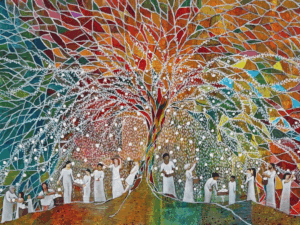
Featured Image: The Love of God by Sabrina J Squires
Today’s artists are redefining what religious art can be. While some honor traditional symbols, others push boundaries, using materials, scale, and context to reframe these images. A neon crucifix or sculptural prayer rug might seem unconventional, but each continues the long artistic tradition of using visual form to explore spiritual meaning.
At the same time, a new wave of spiritual art reaches beyond organized religion altogether. Artists blend religious references with personal mythology, cultural memory, and mysticism. Their work taps into broader ideas of inner truth, transformation, and transcendence.
Collecting Religious Art
Spiritual art resonates on many levels as it tends to hold personal significance. For some, it’s a connection to ancestry or a prompt for reflection or a source of peace. Art that engages with faith can also open dialogue. Depending on how it’s created and encountered, it may challenge, affirm, or inspire.
When curating your collection, consider how different symbols resonate with you, not just as religious motifs, but as artistic expressions of humanity’s shared search for meaning.
Explore our curated collection of religious and spiritual figures in art to discover works of Jesus Christ, sacred symbols, and contemporary interpretations of faith.
